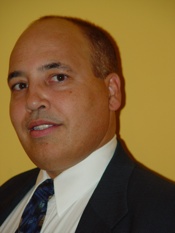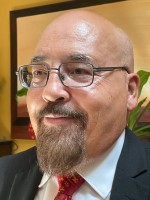What Would Edward Filene Say?
 by: Pablo DeFilippi, Membership Director, National Federation of Community Development Credit Unions
by: Pablo DeFilippi, Membership Director, National Federation of Community Development Credit Unions
Given that the economy is still under stress, it isn’t surprising that the number of unbanked or underbanked consumers continues to grow. What’s surprising and alright shocking is the size of this population. Recent studies estimate that:
- 28 million people in the U.S. are unbanked (those without a traditional savings or checking account) representing nearly 15 million households or 10% of the population
- 45 million people are underbanked (those with some limited relationship with a financial institution) representing 24 million households or 15% of the population
In total 73 million people representing 25% of the U.S. population are financially underserved. That’s an entire country! It is also an untapped market for the credit union industry, a place in which our mission of serving people of small means overlaps with a tremendous business and growth opportunity. But are we up to it?
Traditional wisdom say that there isn’t money in low income and underserved communities, but there is. It’s just under the mattress. More importantly this population has unmet needs that credit unions could address not only by providing more affordable financial services but by educating these consumers to make better financial decisions and by promoting the democratization of the services our industry can provide.
If Edward was one of us today, what would he say about this? Are we living up to his vision, his dream of financial inclusion? When he set up to promote credit unions as a mechanism to provide affordable credit to those who didn’t have access to the financial mainstream. That’s the reason St. Mary’s Bank was established in 1908 to provide services to French-Canadian immigrants working in Manchester, and that’s the reason many more credit unions were created over the next decades.
Who’ serving this population now? Over the last 20 years an entire industry has emerged to fill the void left by traditional financial institutions and meet the needs of this growing populations. Today there are an estimated 13,000 check-cashing outlets in the country cashing more than $80 billion worth of checks annually. Some 80 to 90% of these are payroll checks with an average size of $500 to $600. The remainder are largely government benefits, income-tax-refund, and personal checks. Revenues from this booming business are estimated at over $1.6 billion! On the lending side, at the end of 2010, there were an estimated19,700 payday loan stores operating, with a loan volume at $29.2 billion and $4.7 billion in revenue for loans made by payday loan stores. In addition Internet payday lenders are estimated to have loaned $10.8 billion and collected fees of $2.7 billion. Through in revenue generated by money remitters and tax preparers and you’re looking at $13 billion in revenues coming from people who can least afford it.
So there’s money in these communities. The problem is that it doesn’t stay there. People in underserved communities pay more for everything: from a loaf of bread to cashing a check or to sending money back home. It is expensive to be poor…so expensive that people can’t really afford it.
Access to the financial system is critical. Without it, people don’t have financial management tools, lack a safe place to put money aside for emergencies, and can’t build credit histories to gain access to affordable loans to go to school, buy a car to get to work, buy a home or start a business.
So we’re confronted with a very peculiar situation: in one side we have an untapped market and in the other an industry that needs to grow and that by the most part, has the tools required to meet the needs of that market.
If Ed was here today, what would he say? What would we tell him to justify that after all these years, 25% of the US population doesn’t have access to the financial mainstream? This is our time, and this is our opportunity to bring a new population and a new generation of consumers into our movement. Best of all is that we don’t have to create an alternative industry from the ground up. We just need to change our mindset and adjust our business model to meet the needs of these new markets.
How do we do this? We first meet the needs of this population and then we build the relationship. Check cashing, remittances, bill pay and other transactional services are tools that used properly can enable credit unions to engage these consumers in a more m
If only a quarter of those transactions were conducted at credit unions, we could save billions of dollars in fees paid by consumers using higher pried services. At the same time, we could generate billions of dollars in fee income that would help increase institutional capacity to do more for our existing and future members.
The future is ours, we just need to seize it.
Pablo DeFilippi is the Membership Director for the National Federation of Community Development Credit Unions, a national, nonprofit association that represents, supports and invests in credit unions serving predominantly low-income, financially underserved communities. DeFilippi has more than 20 years of experience in community finance working with regulated financial institutions both in the domestic and international arena. www.cdcu.coop





